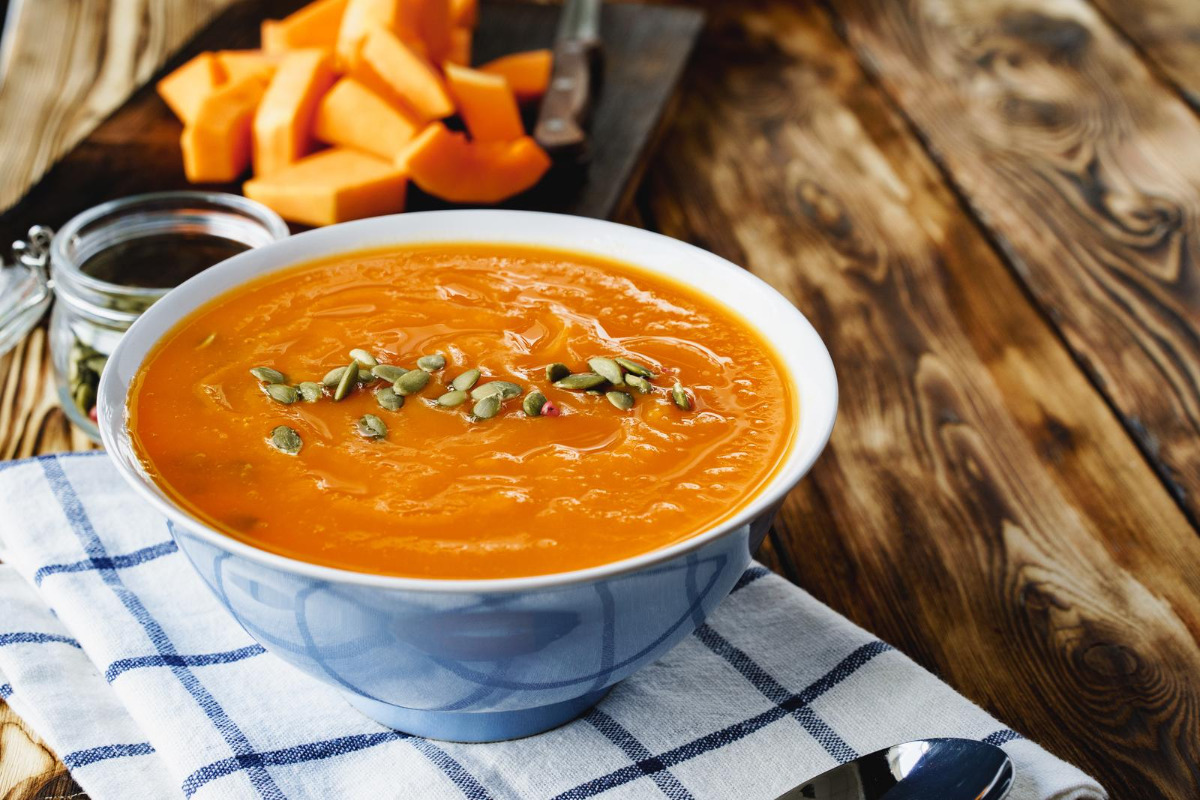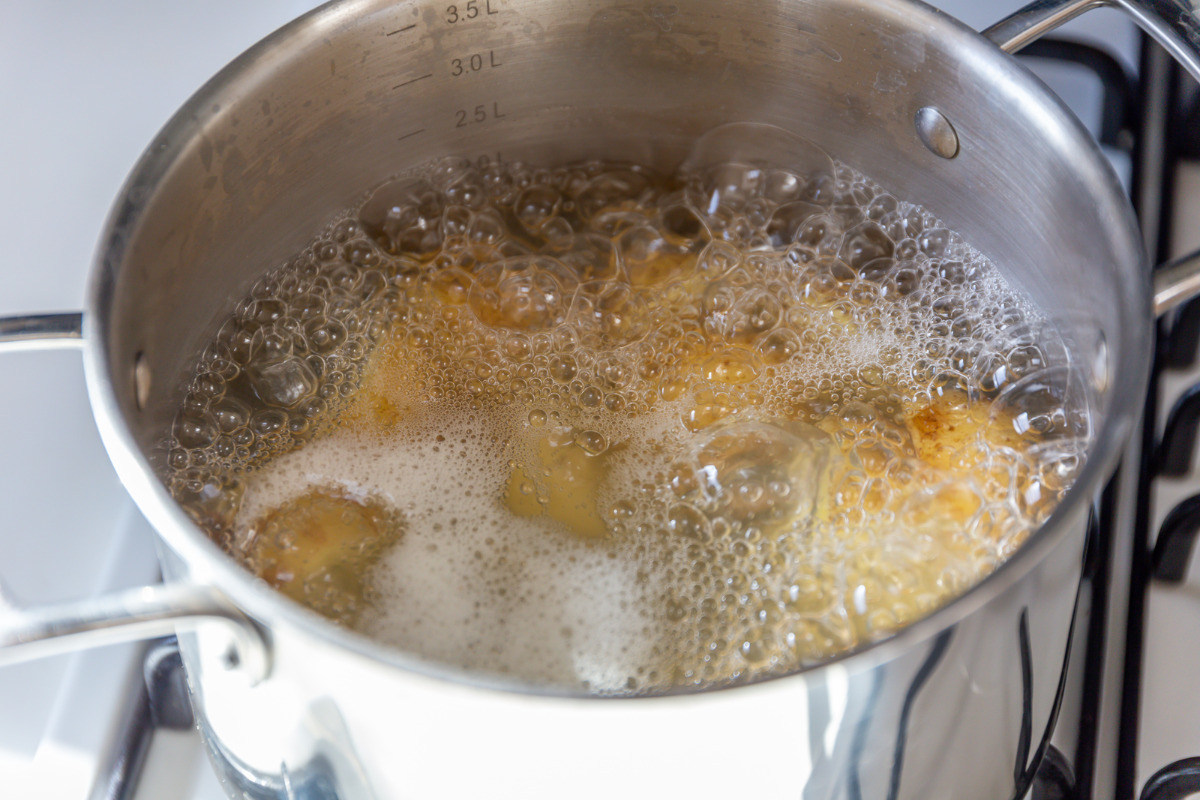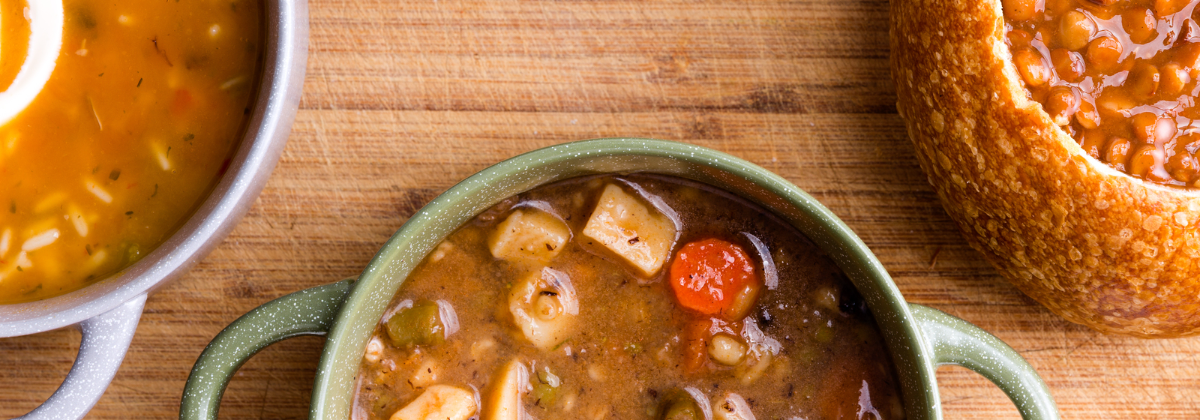Craving that thick, rich soup but lacking the know-how to get it creamy? We’ve all been there. Thankfully, I’ve made knowing how to make soup creamy as easy as ever. Knowing how to thicken soup is equally important for a creamier soup, but let’s tackle making soup creamy first.
You can make soup creamy by using cream, a roux, yogurt, coconut milk, and plain milk. But there’s much more to cover than just adding ingredients. So, let’s jump right in!

Contents
📌 Benefits of a Creamier Soup
Enhanced Texture and Flavor: The addition of cream, dairy, or other ingredients in the soup can contribute to a richer texture and better-tasting flavor.
Nutrient-Rich Option: A creamier soup can offer an extra source of additional nutrients from dairy products, such as calcium and protein, which can contribute to a balanced diet.
Digestion: The smooth and velvety consistency of creamier soups can be easier to swallow and digest. A suitable consistency for those with swallowing difficulties or sensitive digestive systems.
Versatile Culinary Base: Creamier soups can serve as a delicious multi-use base for incorporating various ingredients like vegetables, meats, or seafood. This allows for creative and customizable culinary options.
🫕 Preparation Techniques
Sautéing Aromatics
Before knowing how to make soup creamy, you’ve first got to prepare it. Start by sautéing your aromatics in a little bit of oil or butter. This’ll help to bring out their flavors and aromas, which will add to the creamier flavor of the soup. Sauté the aromatics until they’re translucent and fragrant, but be careful not to let them brown.
Blending for Smoothness
Pureeing your soup is one of the best ways to make soup creamy for a more natural, delicate texture. You can use a blender, food processor, or immersion blender to puree your soup to the desired consistency. Be sure to let the soup cool slightly before blending, and work in batches if necessary.
Simmering to Perfection
Simmering your soup is also another important step in achieving a creamy texture. Allow your soup to simmer gently over low heat, stirring occasionally, until it thickens and the flavors meld together. This can take anywhere from 20 minutes to an hour, depending on the ingredients you’re using.

💡 Ways to Make Soup Creamier
Add Cream
The best way how to make soup creamy is by adding cream. Whether you use heavy cream, half-and-half, or light cream, adding a splash or two will give your soup a velvety texture and rich flavor. This is great for adding a creamy texture to classic soup and sides parings. Not only does the cream thicken the soup, but it also balances out the acidity.
To add cream to your soup, simply pour it in slowly, stirring constantly to prevent curdling. If you’re worried about the calories, you can use a lower-fat cream or substitute it with milk or yogurt.
Make a Roux
Making a roux is another great way to thicken your soup and make it creamier. It’s a mixture of equal parts butter and flour. A roux works thanks to the starch present in side it. This paste is then added to the soup to thicken it and give it a creamy texture.
To make a roux, melt butter in a saucepan over medium heat. Add an equal amount of flour and whisk until the mixture turns into a paste. Cook for a few minutes until the roux turns a light brown color. Add the roux to your soup and stir until it’s fully incorporated.
Use Milk
If you don’t have cream on hand, you can use milk to make your soup creamier. While it won’t be as rich and velvety as cream, it’ll still give your soup a creamy texture and mellow out any acidity.
To use milk, simply pour it into your soup and stir until it’s fully incorporated, ideally simmering for a bit longer afterwards to allow the soup to further thicken. If you’re using low-fat milk, you may need to use more to achieve the desired creaminess.
Add Yogurt
Yogurt is another great way to make your soup creamier while also adding a tangy flavor. Greek yogurt works especially well in soups because it’s thicker and creamier than regular yogurt. To add yogurt to your soup, whisk it in slowly, stirring constantly to prevent curdling. If you’re worried about the tangy flavor, you can use a plain, unsweetened yogurt or mix it with milk or cream.
Use Coconut Milk
If you’re looking for a dairy-free option, coconut milk is a great alternative to cream. It’s thick and creamy, with a subtle coconut flavor and tons of healthy benefits. To use coconut milk, simply pour it into your soup and stir until it’s fully incorporated. If you’re worried about the coconut flavor, you can use light coconut milk or mix it with another milk or cream.
Thicken with Nuts
Nuts are a great way to add creaminess to your soup while also adding healthy fats and protein. Cashews and almonds work especially well in soups because they’re creamy and mild in flavor.
To use nuts, soak them in water for a few hours or overnight to soften them. Drain the nuts and blend them with a little water until they form a smooth paste. Add the paste to your soup and stir until it’s fully incorporated.
Puree Your Soup
Pureeing your soup is another great way how to make soup creamy. This works especially well for soups that contain vegetables, legumes, or beans. After cooking the ingredients, allow them to cool slightly before blending until smooth.
To puree your soup, you can use a blender, food processor, or immersion blender. Be sure to blend in batches if you’re using a blender or food processor. Also, be careful not to overfill the container.
Use Cornstarch or Flour
Cornstarch or flour can also be used to thicken your soup and make it creamier. Simply whisk a tablespoon of cornstarch or flour into a small amount of cold water until it forms a smooth paste. Add the paste to your soup and stir until it’s fully incorporated.
Be sure to whisk the paste well to prevent lumps from forming. You can also cook the soup for a few minutes after adding the paste to help it thicken.
Finish with Butter
Finishing your soup with a pat of butter is a great way to add richness and creaminess. Simply stir in a small amount of butter before serving to give your soup a velvety texture and rich flavor, much like Indian butter chicken sauce. Be sure to use unsalted butter so you can control the saltiness of your soup. Knowing how to make soup less salty can counter this if it does happen.
🧑🍳 Types of Creamy Soup You Can Make
Cream of Mushroom Soup: This creamy soup is rich and velvety and made with pureed mushrooms, cream, and savory seasonings. It offers a comforting and earthy flavor.
Potato Leek Soup: A smooth and creamy soup featuring tender potatoes, sautéed leeks, and a touch of cream, providing a delicate yet satisfying taste.
Creamy Tomato Soup: A luscious and tangy soup crafted from ripe tomatoes, onions, and cream, delivering a classic and comforting combination of flavors.
Broccoli Cheddar Soup: A decadent and indulgent soup combining tender broccoli florets, sharp cheddar cheese, and cream, resulting in a creamy and flavorful dish.
Clam Chowder: A hearty and creamy soup made with tender clams, potatoes, and cream, offering a rich and briny taste of the sea.
Butternut Squash Soup: A velvety and sweet soup featuring roasted butternut squash, aromatic spices, and cream, providing a warm and comforting flavor profile.
🧐 Frequently Asked Questions
To make soup smooth, you can use a blender or food processor to puree the soup until it is silky and smooth. Alternatively, you can use an immersion blender directly in the pot. Another tip is to strain the soup through a fine mesh sieve to remove any lumps or chunks.
Yes, you can make soup creamy without cream. One option is to use pureed vegetables like potatoes, cauliflower, or carrots to thicken the soup and give it a creamy texture. Another option is to use coconut milk or almond milk instead of cream.
Yes, you can use chicken to make soup creamy. Adding chicken stock or cooked and shredded chicken with bones before simmering a soup will give the thickening collagen in the chicken time to release and make the soup heartier and creamier.
To make your soup creamy without dairy, you can use non-dairy milk alternatives like almond milk, coconut milk, soy milk, pureed veg, cashews, and tahini.
